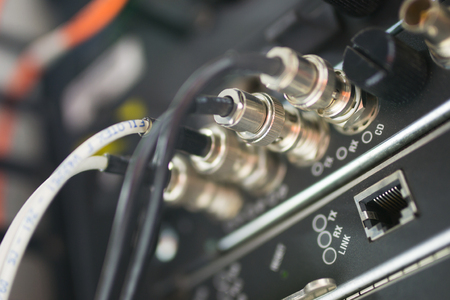Introduction to IPL Technology
Intense Pulsed Light (IPL) technology has become a cornerstone in the field of non-invasive cosmetic and dermatological treatments, both globally and within the United Kingdom. Rooted in the principles of selective photothermolysis, IPL employs broad-spectrum light to target chromophores within the skin, such as melanin and haemoglobin. Unlike traditional laser therapies that utilise a single wavelength, IPL systems generate a series of controlled pulses across multiple wavelengths. This versatility enables practitioners to address a wide range of concerns, including hair reduction, pigmentation irregularities, vascular lesions, and skin rejuvenation.
The inception of IPL dates back to the early 1990s when medical researchers sought alternatives to single-wavelength laser devices. Initial developments focused on providing safer, more adaptable solutions for various skin types and conditions. As a result, IPL quickly garnered attention for its efficacy, reduced downtime, and lower risk profile compared to earlier modalities. The technology’s adaptability spurred global interest and set the stage for further advancements, particularly as it began to gain traction in key markets such as the UK. Today, IPL is widely recognised as an innovative solution that bridges scientific research with clinical application, laying a robust foundation for its ongoing evolution in British aesthetic practice.
2. Early Adoption of IPL in the UK
Intense Pulsed Light (IPL) technology began making its way into the UK market during the late 1990s, following significant advancements in light-based therapies across Europe and North America. The initial introduction was met with cautious optimism, as both practitioners and regulatory bodies sought to evaluate its safety and efficacy in comparison to more established laser treatments. Early adopters included dermatology clinics in London, Manchester, and Edinburgh, who recognised IPLs versatility for addressing a range of skin conditions such as vascular lesions, pigmentation issues, and unwanted hair.
Early Clinical Studies in the UK
UK-based clinical trials played a pivotal role in shaping national guidelines for IPL usage. These studies primarily focused on treatment outcomes for photorejuvenation and hair reduction, comparing results with traditional laser devices. Key findings highlighted IPL’s broader wavelength spectrum as advantageous for treating diverse skin types but also underscored the necessity for proper operator training to avoid adverse effects.
| Year | Institution | Study Focus | Main Findings |
|---|---|---|---|
| 1998 | St Thomas Hospital, London | Hair Reduction Efficacy | Significant reduction after multiple sessions; mild discomfort reported |
| 2001 | University of Manchester | Pigmentation Disorders | Improvement in melasma and sun damage; minimal downtime required |
| 2003 | Edinburgh Royal Infirmary | Treatment Safety & Side Effects | No severe complications; importance of skin type assessment emphasised |
Initial Public Perception and Regulatory Response
The British public initially approached IPL technology with a blend of curiosity and scepticism. Media outlets reported on its potential as a non-invasive cosmetic solution, while consumer watchdog groups raised concerns about unregulated clinics offering treatments without proper qualifications. This led to a push for clearer standards from regulatory bodies such as the Care Quality Commission (CQC) and the British Association of Dermatologists (BAD). As a result, early years saw concerted efforts to educate both practitioners and clients on safe treatment protocols and realistic expectations.
![]()
3. Regulatory Landscape and Safety Standards
The United Kingdom is renowned for its rigorous approach to public health and safety, particularly in the domain of aesthetic technologies such as Intense Pulsed Light (IPL) devices. As IPL technology gained traction in the UK during the late 1990s and early 2000s, regulatory oversight became a critical factor in safeguarding both practitioners and clients. The Medicines and Healthcare products Regulatory Agency (MHRA) plays a pivotal role in this landscape, ensuring that all IPL devices meet strict safety and efficacy standards before they enter the UK market.
From an early stage, the MHRA categorised IPL systems as medical devices when used for specific medical indications, subjecting them to the Medical Devices Regulations 2002 (as amended). This required manufacturers to demonstrate compliance with essential requirements relating to electrical safety, optical radiation, and clinical effectiveness. Devices intended purely for cosmetic use faced a more nuanced framework, but increasing public awareness and high-profile incidents prompted calls for enhanced regulation across the sector.
Today, all IPL equipment must undergo rigorous testing and certification processes, including conformity assessments, risk analysis, and continuous post-market surveillance. Professional operators are expected to adhere to comprehensive protocols covering device maintenance, client consultation, and operator training—often guided by standards such as BS EN 60601 for electrical safety. These measures reflect the UKs commitment to minimising risks associated with IPL procedures while fostering innovation within a tightly regulated environment.
As a result of this robust regulatory environment, the UK has established itself as a benchmark for IPL safety standards internationally. The MHRA continues to adapt its guidance in response to technological advancements, market trends, and evolving clinical evidence. This ensures that practitioners and consumers alike can trust the integrity of IPL treatments offered throughout the country—a key factor driving sustained growth and public confidence in this dynamic sector.
4. Technological Advancements and Local Innovations
The United Kingdom has played a pivotal role in the advancement of IPL (Intense Pulsed Light) technology, introducing a range of technical improvements that have shaped both domestic and global markets. UK-based engineers and clinicians have continually pushed the boundaries of IPL applications, focusing on efficacy, safety, and user experience.
Selective Photothermolysis: A Cornerstone Breakthrough
One of the most significant technological milestones popularised in the UK is selective photothermolysis. This principle, which underpins modern IPL systems, enables targeted treatment by delivering specific wavelengths that are absorbed by melanin or haemoglobin while sparing surrounding tissue. The result is effective hair reduction and vascular lesion treatment with minimal side effects—a crucial factor driving consumer confidence in British clinics.
Enhanced User Safety Mechanisms
Safety has always been a core concern for both practitioners and end-users. In response, UK innovators have developed robust safety mechanisms, including integrated skin contact sensors, real-time cooling technologies, and automatic energy adjustment based on skin tone detection. These enhancements not only minimise risks such as burns or hyperpigmentation but also make home-use devices more accessible to the public. The following table summarises some key advancements:
| Innovation | Description | Impact on User Experience |
|---|---|---|
| Selective Photothermolysis | Targeted light absorption for precise treatment | Improved effectiveness; reduced side effects |
| Skin Contact Sensors | Device operates only when in full contact with skin | Enhanced safety; prevents accidental flashes |
| Dynamic Cooling Systems | Cools skin during pulse delivery | Increased comfort; reduced risk of burns |
| Automatic Energy Adjustment | Adapts intensity based on user’s skin tone | Personalised treatments; safer for diverse users |
Pioneering Standards and Regulatory Leadership
The UK has also influenced regulatory standards, leading efforts to ensure IPL systems meet stringent safety and performance criteria. This proactive approach has contributed to widespread adoption and trust in IPL technology across British clinics and households.
Continuous Evolution Driven by Local Expertise
The synergy between British clinical research and engineering ingenuity continues to drive the evolution of IPL technology. As demand for safe, effective at-home solutions grows, the UK remains at the forefront—fostering innovation that aligns with local needs and regulatory expectations.
5. Growth of IPL in British Clinics and High Streets
As Intense Pulsed Light (IPL) technology matured, its adoption in the United Kingdom saw remarkable growth, transitioning from an exclusive offering in specialist dermatology clinics to a mainstream presence on high streets across the nation. This expansion was driven by a combination of technological refinement, regulatory clarity, and shifting consumer perceptions regarding non-invasive cosmetic treatments.
Proliferation Across Clinics and Salons
Initially, IPL systems were predominantly found in private medical practices and upmarket aesthetic clinics, where practitioners could offer advanced treatments with a strong focus on safety and efficacy. However, as demand for accessible beauty solutions grew, IPL quickly became a fixture within high street salons. This democratization of IPL services was facilitated by the introduction of more compact and affordable devices, allowing smaller businesses to invest in the technology without prohibitive costs.
The Rise of At-Home Devices
In parallel with clinical adoption, the UK market witnessed a surge in at-home IPL devices. Brands tailored their offerings to British consumers seeking convenience and privacy, often emphasising ease-of-use and incorporating safety features compliant with local regulations. Major retailers began stocking these devices, further normalising IPL as part of the British self-care routine.
Changing Consumer Attitudes
British attitudes towards IPL treatments have evolved significantly over the past two decades. Where once there was scepticism about both safety and results, increasing exposure and positive word-of-mouth led to broader acceptance. Today’s consumers are not only more informed about the science behind IPL but also view it as an effective alternative to traditional hair removal or skin rejuvenation methods. The integration of IPL into everyday beauty regimens reflects a wider cultural shift: British clients now expect evidence-based results from aesthetic procedures and value both professional expertise and user-friendly home solutions.
Overall, the proliferation of IPL technology throughout UK clinics, salons, and homes highlights both a technological evolution and an adaptive consumer landscape—one that increasingly values innovation, safety, and accessibility in personal care.
6. Emerging Trends and Future Outlook
The United Kingdom continues to be at the forefront of innovation in IPL (Intense Pulsed Light) technology, with several notable trends shaping the landscape. One significant development is the growing integration of IPL systems with other aesthetic and medical technologies, such as radiofrequency (RF), ultrasound, and advanced cooling mechanisms. This synergy not only enhances treatment efficacy but also addresses key concerns around safety and patient comfort, responding to the discerning demands of British consumers.
Integration with Digital Platforms
British clinics and practitioners are increasingly adopting digital platforms to deliver more personalised IPL treatments. AI-driven skin analysis tools are being utilised to assess individual skin types and conditions, allowing for highly tailored protocols. This trend reflects the UK’s strong emphasis on evidence-based practice and consumer safety.
Home-Use Devices Gaining Momentum
The rise of sophisticated home-use IPL devices marks another significant trend in the UK market. Driven by a demand for convenience and privacy, British consumers are embracing compact, user-friendly solutions that rival professional results. Manufacturers are investing heavily in R&D to ensure these devices meet rigorous UK safety standards while offering enhanced features such as adjustable intensity settings and smart sensors.
Focus on Inclusivity and Expanded Indications
There is a clear movement towards making IPL treatments more inclusive. Recent advances by UK researchers have led to devices suitable for a broader range of skin tones and hair colours, addressing previous limitations. Moreover, ongoing research aims to expand the scope of IPL beyond hair removal and skin rejuvenation to include vascular lesions, acne management, and pigmentation disorders—responding to evolving consumer expectations.
Shaping the Future: Sustainability and Regulation
Sustainability is fast becoming a priority within the UK’s aesthetics sector. British manufacturers are developing eco-friendlier IPL systems with energy-efficient components and recyclable materials. At the same time, regulators are working closely with industry stakeholders to ensure robust standards that protect both patients and practitioners, anticipating future technological advancements.
Looking ahead, the UK’s blend of scientific rigour, consumer awareness, and commitment to innovation ensures that IPL technology will continue to evolve rapidly. As British R&D drives new breakthroughs and consumers seek ever more effective, safe, and inclusive solutions, the future of IPL in the United Kingdom promises both dynamic growth and enduring global influence.


